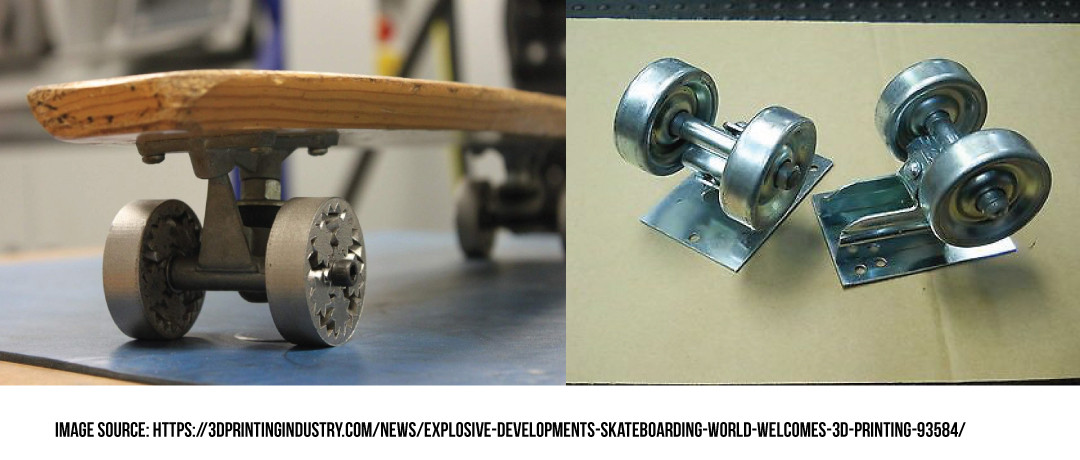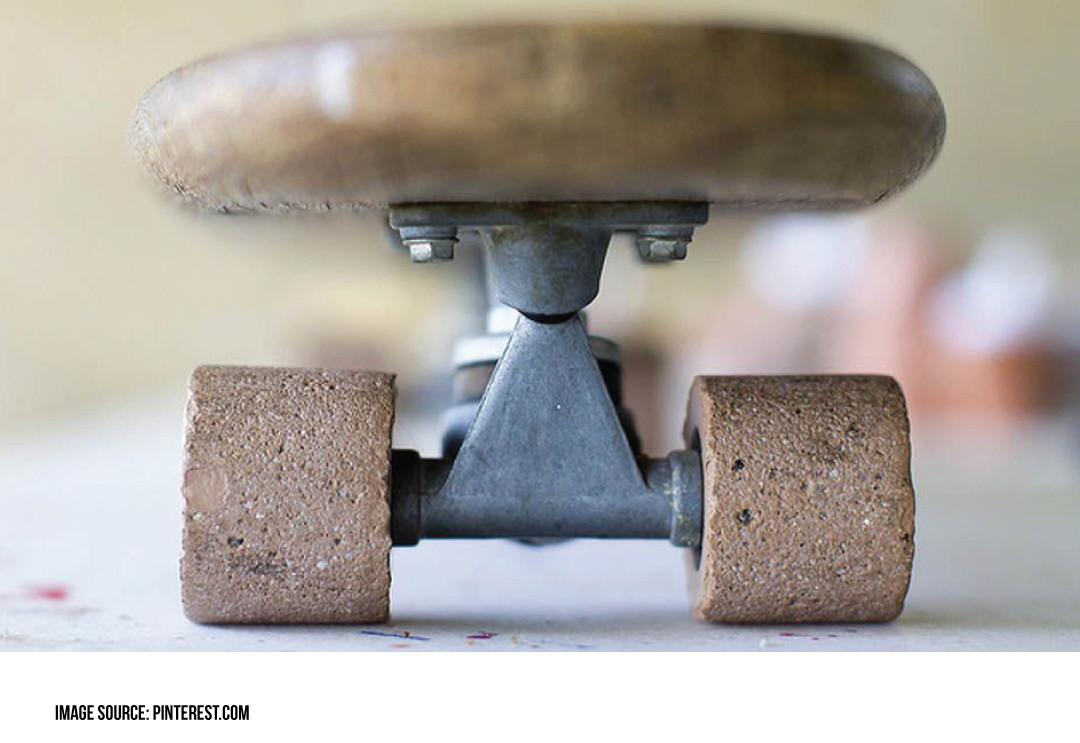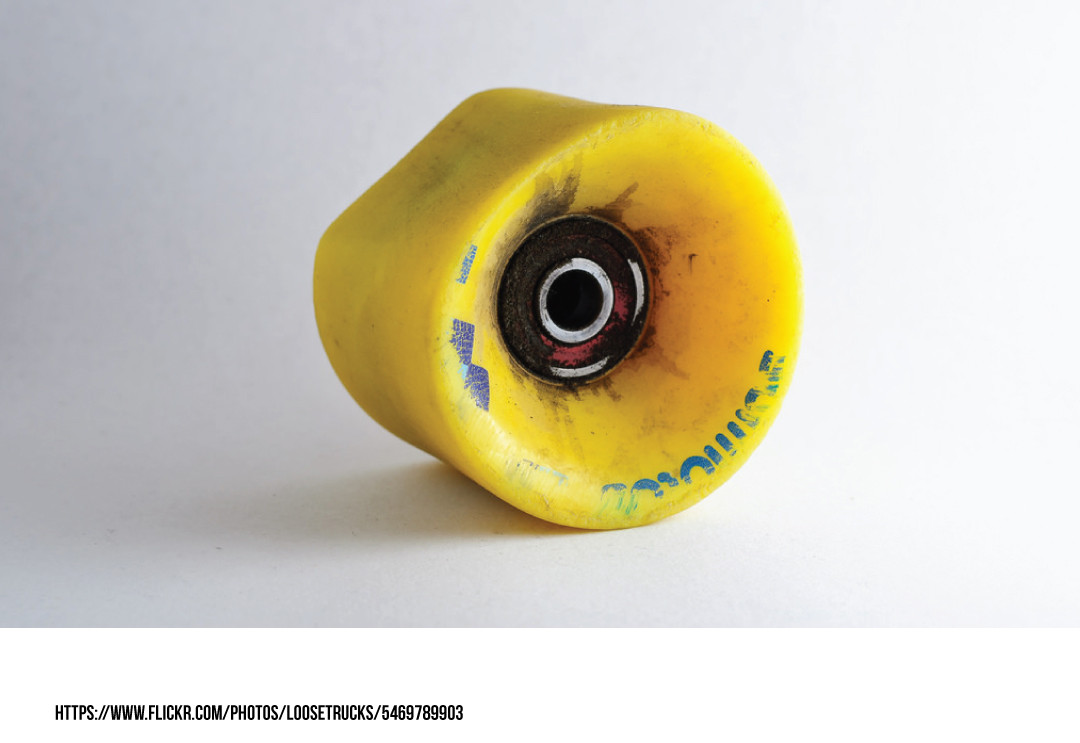Posted by Yocaher Skateboards on Mar 8th 2019
The Bounce Test: What Wheel Rebound Means To Your Skating
When people talk about skateboard wheels, the terms bounce and rebound often become part of the conversation. Some of what they mean is obvious, but there is more to the story than there first appears. Let’s look a little closer at what your wheels’ ability to bounce means to your skating.
Before Wheels Bounced
The easiest way to understand how wheel rebound helps in skateboarding is to just think back to before wheels were made from urethane. The original skateboards were just metal roller skate wheels that kids attached to a piece of wood. These wheels skimmed across the pavement more than they rolled. They were snail slow and almost painful to ride.

Clay wheels came next, but the ride was nearly as jarring as it was with metal wheels. It wasn’t until urethane came into use in the 1970s that skateboarders were able to enjoy the smooth rides they still do today. The reason is because of rebound.

What is Rebound?
Rebound is just another way of saying bounce. In other words, it is the way that something snaps back into shape after it has been knocked out of shape – what physicists call deformation. If you watch high-frame-rate video of a sports ball hitting a solid surface, you’ll see that it can deform much more severely than it seems with the naked eye.
What makes those balls useful in sports is their ability to snap back into their original shape quickly, and to do it the same way every time. The quicker the snap back – or rebound – the higher the bounce. The subject gets really technical if you want to go down the rabbit hole, but it’s one of the main reasons a golf ball flies farther than a baseball.
Skateboard Wheels Bounce
What urethane brought to skateboarding was a wheel that could actually bounce. The rebound effect is a natural property of urethane, but it is one that chemists and wheel companies work hard to perfect. The early urethane wheels may have been a luxury compared to clay and steel, but good can always be better.

You can see the rebound effect for yourself. All you have to do is drop a skateboard wheel on a hard surface and see how high it bounces up into the air. If you try it with different wheels – even of the same durometer – you’ll soon see how drastically the bounce can differ from one wheel to another. It’s also an issue of quality. An ill-poured urethane or one that didn’t set properly in the mold will have almost no bounce. It will be “dead.”
Longboard Wheels Bounce Too
Bounce is perhaps even more critical for longboard wheels, which are much softer than skateboard wheels. Dead longboard wheels feel mushy and unresponsive. Their lazy action makes riding them boring and tedious, exactly the opposite of why people ride.
Check their wheels on your longboard for bounce. It’s simple, just drop one to the floor the same way a golfer drops a golf ball. Hold it at arm’s length and let it fall. Make sure it hits a hard surface like concrete, and make sure it hits the contact patch. If one wheel bounces noticeably lower than others of the same durometer, there is a consistency problem either in the formula or the pour. If you like your wheels, you can compare the bounce of others in the future.
The Surface Matters
It might seem obvious that the hardness of the surface that the wheel strikes will make a difference in the bounce, but think about how that plays into your skating. Skateboard wheels can have durometers of as much as 101a. This hardness might play well on perfect concrete, each imperfection will be noticeable.
Harder wheels are faster in general and they slide easier, but they also produce a rougher ride. On smooth skatepark surfaces, that’s fine. But it’s a different story on street. Yocaher skateboard wheels are always a smooth 99a – just hard enough to break away easily for slides, but still smooth on uneven blacktop and other unpredictable surfaces.
Bounce and Terrain
A critical thing happens when a urethane wheel deforms over an imperfection in the riding surface. At a certain consistency and durometer, the urethane will snap back just at the right time to actually propel the skateboarder forward a bit. It’s a slight return of energy that is missing from those “dead” wheels, but it’s also gone when the wheels don’t match the surface.

Softer wheels deform more easily, but they don’t rebound as quickly. They provide a smooth, cushy ride, which is why they are perfect for cruising. Hard wheels snap back into shape, but they lose too much energy if they are too hard for the surface. The smoothness of urethane is lost, and you’d just as soon go back to riding clay and steel.
Conclusion
The decision about which wheels you choose to ride is yours alone. At Yocaher, we’ve put the time into making our urethane formulas and pours consistent from wheel to wheel. Give them the bounce test, and you’ll see that they stack up to the competition. We keep it simple – leaving off those expensive graphics that wear off anyway and passing the savings on to you. What you’re left with is a smooth, responsive wheel that is at home on all terrains.
ON THAT NOTE... Check out our selection of Skateboard and Longboard wheels. Click the link below.

